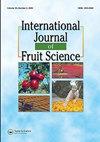通用可可IMC67植株的繁殖研究通过体细胞胚胎发生的砧木
IF 2.5
3区 农林科学
Q2 HORTICULTURE
引用次数: 5
摘要
可可作物的一个主要问题是种子的多样性。这导致考虑体细胞胚胎发生(SE),获得稳定的克隆与最小的体细胞无性系变异的手段;然而,对于许多基因型来说,实现这一点是不可能的。在这项工作中,我们使用IMC67基因型(传统嫁接过程中的砧木)来评估不同的SE方案;四种诱导和表达初生胚胎发生(PSE)的培养基:诱导培养基(INDI)、表达培养基(INDIEXP)、初生愈伤组织诱导培养基(PCG)和次生愈伤组织生长培养基(SCG),以及两个外植体(花瓣和雄蕊)。根据愈伤组织形成、PSE和SSE的不同培养时间(15、25、35、45、55、65天)和SSE(10、20、30、40、50、70、80天)进行评价。在驯化方面,研究了7种基质对植株存活率的影响。在indii中,雄蕊在第50天达到100%的胼胝质形成,而在INDIexp中,每个外植体的最大PSE(8)在第45天达到。在愈伤组织增殖(CM2)的第30天,次生体细胞胚(SSE)获得了最多的球状胚和子叶胚(30个)。胚胎在成熟培养基(MM6)中转化发育成植株。PSE和SSE外植体的胚发生效率分别为11.7和15.2。驯化后在70%砂- 30%土壤基质下的成活率为42.1%。本研究报告了IMC67砧木基因型在苗圃中通过体细胞胚胎发生直至植株发育的完整再生方案;有助于标准化高质量的工厂生产体系。本文章由计算机程序翻译,如有差异,请以英文原文为准。
Propagation of IMC67 Plants, Universal Cacao (Theobroma Cacao L.) Rootstock via Somatic Embryogenesis
ABSTRACT One major problem with cacao crops is the variability of plantings obtained from seeds. This has led to considering somatic embryogenesis (SE), a means of obtaining stable clones with minimal somaclonal variation; however, achieving this has not been possible with many genotypes. In this work, we used IMC67 genotype (rootstock in the traditional grafting process) to evaluated various SE protocols; four culture media for induction and expression primary embryogenesis (PSE): induction medium (INDI), expression medium (INDIEXP), primary callus induction medium (PCG), and secondary callus growth medium (SCG), as well as two explants (petal and staminode). Different culture times for PSE (15, 25, 35, 45, 55, 65 days) and SSE (10, 20, 30, 40, 50, 70, 80 days) were evaluated in terms of callus formation, PSE, and SSE. For acclimation, seven substrates were evaluated for plantlet survival. One hundred percent callogenesis was achieved at 50 days with the staminode in INDI, and the most PSE per explant (8) in INDIexp was achieved at 45 days. Secondary somatic embryogenesis (SSE) obtained the most globular and cotyledonary embryos (30) at 30 days in callus multiplication (CM2). The embryos achieved conversion and development into plantlets in maturation medium (MM6). Embryogenic efficiency from explants was 11.7 for PSE, and 15.2 for SSE. Acclimation obtained a 42.1% survival rate in the 70% sand- 30% soil substrate. This work reports a complete regeneration protocol via somatic embryogenesis up to plantlet development in a nursey for the IMC67 rootstock genotype; contributing to standardizing a high-quality plant production system.
求助全文
通过发布文献求助,成功后即可免费获取论文全文。
去求助
来源期刊

International Journal of Fruit Science
Agricultural and Biological Sciences-Agronomy and Crop Science
CiteScore
6.40
自引率
0.00%
发文量
64
审稿时长
10 weeks
期刊介绍:
The International Journal of Fruit Science disseminates results of current research that are immediately applicable to the grower, extension agent, and educator in a useful, legitimate, and scientific format. The focus of the journal is on new technologies and innovative approaches to the management and marketing of all types of fruits. It provides practical and fundamental information necessary for the superior growth and quality of fruit crops.
This journal examines fruit growing from a wide range of aspects, including:
-genetics and breeding
-pruning and training
-entomology, plant pathology, and weed science
-physiology and cultural practices
-marketing and economics
-fruit production, harvesting, and postharvest
 求助内容:
求助内容: 应助结果提醒方式:
应助结果提醒方式:


